Caution: in this post, I talk candidly and openly about my body shape. I use the word “fat” as a neutral descriptor; my body is fat, and that’s okay. I talk about how my body shape makes it difficult or impossible to buy or wear certain things; these comments are to help you understand my body shape, not a request for advice or suggestions. I briefly mention pregnancy loss / stillbirth and fatphobic abuse. I also briefly mention exercise, but not in the context of weight loss.
When I design, I almost always design for my own body. That’s largely out of practicality; it’s me that wears my samples (yes, of course they get worn), and my body is the only one I have full access to.
I do my best to consider the needs of other body types and shapes. Other than shawls, all my patterns have multiple sizes, and many also include instructions for making adjustments or even creating your own custom size. But ultimately, I inhabit a fat body, and that informs everything I design.
The thing is, fat bodies aren’t all the same. Bodies of any size aren’t the same shape, but the bigger the body, the more literal space there is to be a different shape. Which means that fat people often have specific considerations when choosing clothes, particularly when it comes to silhouettes.
Because all bodies are different, I want to tell you about mine. I want you to have an idea of what I’m thinking about when I’m choosing or designing clothes, so that you can see where I’m coming from, and work out if the design I’ve come up with will work for you or not. Because no design will work for everyone, and that’s totally okay! The important thing, for me, is that whatever size you are, you have the OPTION to knit this garment in a size that will physically fit your body, so that if the shape and design is right for you, you’re good to go.
So. What’s my body like? Well, fat. Quite fat, actually. Fat enough that chairs with arms are rarely comfortable, for example, or that I can’t shop on the high street. Fat enough that people have stopped me in the street to offer me a diet regime, or – more often – just some casual fatphobic abuse.
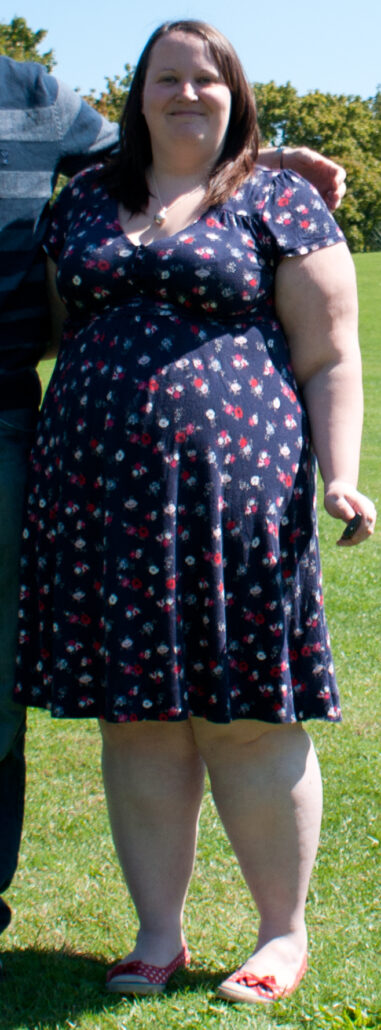
A fat body isn’t a thin body made larger, though. Fat doesn’t adhere to your body the same way in every place, for a start. Secondly, fat moves when you do, so people with a lot of tummy fat need flexible waistbands (and more belt loops, but that’s a whole other rant). Thirdly, being fat means your body changes over time in ways that it might not for straight size people. And then there’s pregnancy, something my body has done three times. So my fat body is not the same as any other randomly chosen fat body out there. (Spoiler: none of them are!)
That means that I have some shape challenges that are specific to fat bodies, but not all fat bodies. It means that even when shopping online for plus sized clothes, I am not certain that all of them will fit me, especially when shopping for my bottom half.
Let’s get specific.
I’m broadly an apple-meets-pear shape. My fat is on my chin, my upper arms, my tummy, bum, thighs, calves. These are the places where I struggle to get a good fit on clothes.
My upper arms are very large compared to the rest of my upper body; my boobs aren’t huge, my shoulders are fairly small, and my torso is long relative to my average height and smaller than the rest of me. Thanks to a solid couple of years powerlifting my upper arms also have a little muscle under all the fat, which is totally invisible but still adds to the overall size. This means that I cannot wear tops with sleeves that don’t stretch. It’s impossible. They just don’t fit. They often don’t go over my upper arms at all, and if they do, they feel extremely tight and uncomfortable. I have literally busted seams by flexing my biceps, back in the weightlifting days. My tops are all stretchy or sleeveless; my favourite find is a longer length, sleeveless shirt, so I can have the look of a shirt under a cardigan without hulking out.
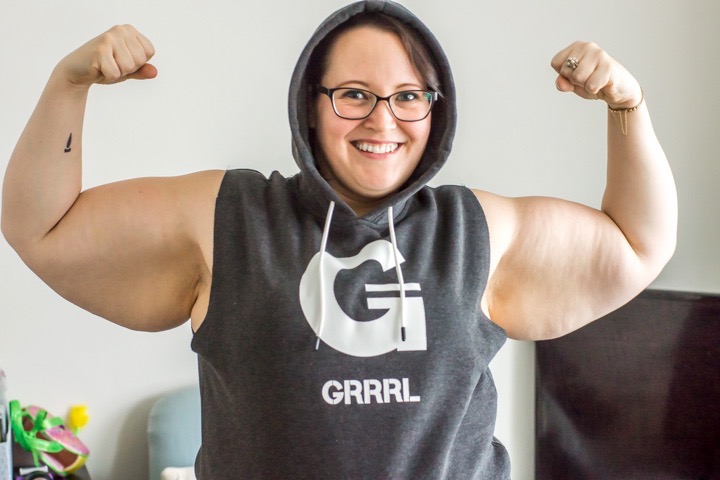
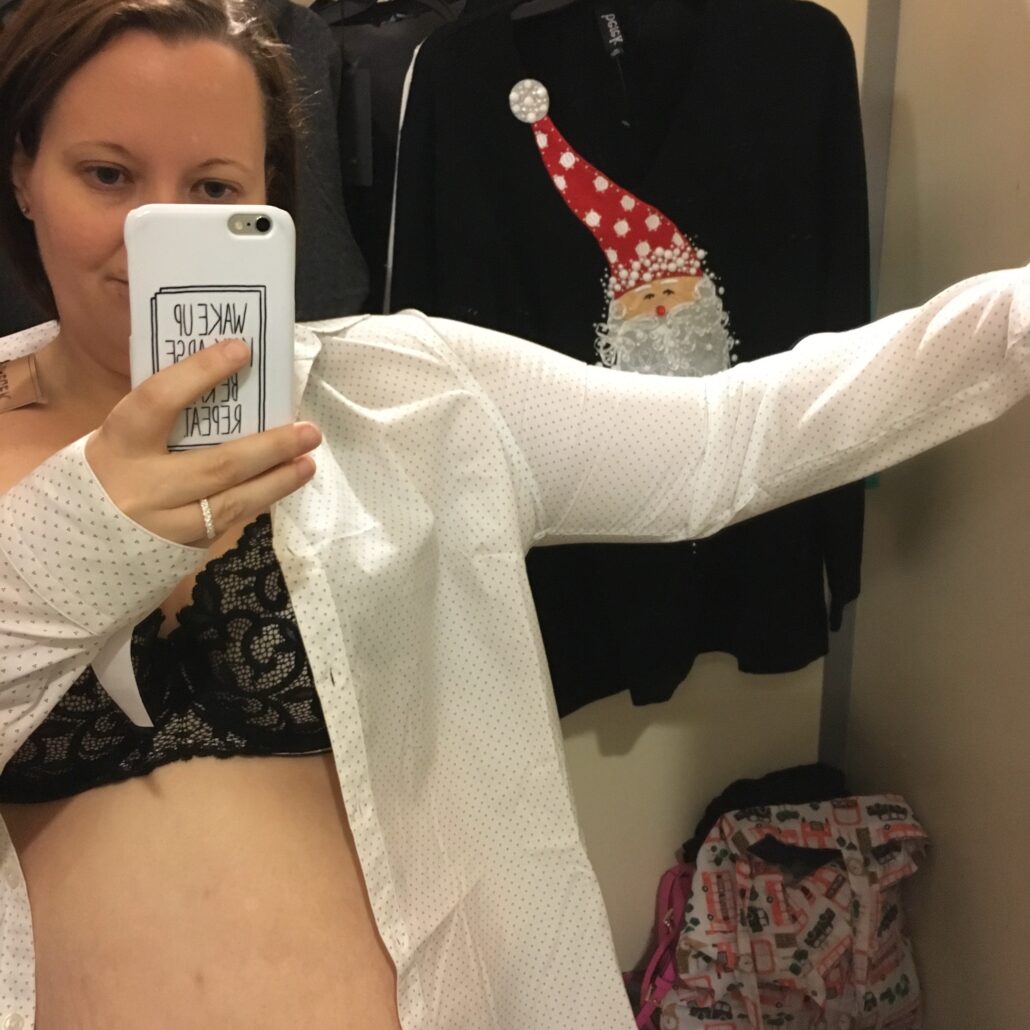
My tummy is the next tricky spot, and this one is much less fun to talk about as I can’t hide behind jokes about biceps and strength. I’ll just put it bluntly: my tummy is my fattest area and, after three pregnancies, I have a prominent apron. This means that my tummy sags down in the front, kind of like how one looks after rapid weight loss, except it’s also still fat. It’s the part of my body I feel most vulnerable about, and as I’m typing this out in my drafts, I’m wondering if I actually have the guts to post this (…pun unintentional, but I’ll leave it in). Not only is it unsightly by current beauty standards, it’s a reminder of my first two pregnancies, both of which ended in stillbirths. I don’t like to look at it, even through clothes, and I would be utterly mortified if anyone saw it.
This means that most typical silhouettes aren’t an option for me. I basically can’t wear trousers. Leggings under a tunic are fine, and I do have one pair of magical summer trousers that are loose enough around the tummy to not highlight anything, but in essence, all trousers display and highlight the apron, so I can’t wear them. In turn, this means that I can’t wear most tops, because they stop where trousers start.
Additionally, my size on the bottom half is 2 sizes bigger than my size on the top half, so anything that covers my top half and my tummy or lower needs to have some shape to it. Otherwise, if it fits on top it’ll be too small on bottom, and if it fits on bottom it’ll be too big on top.
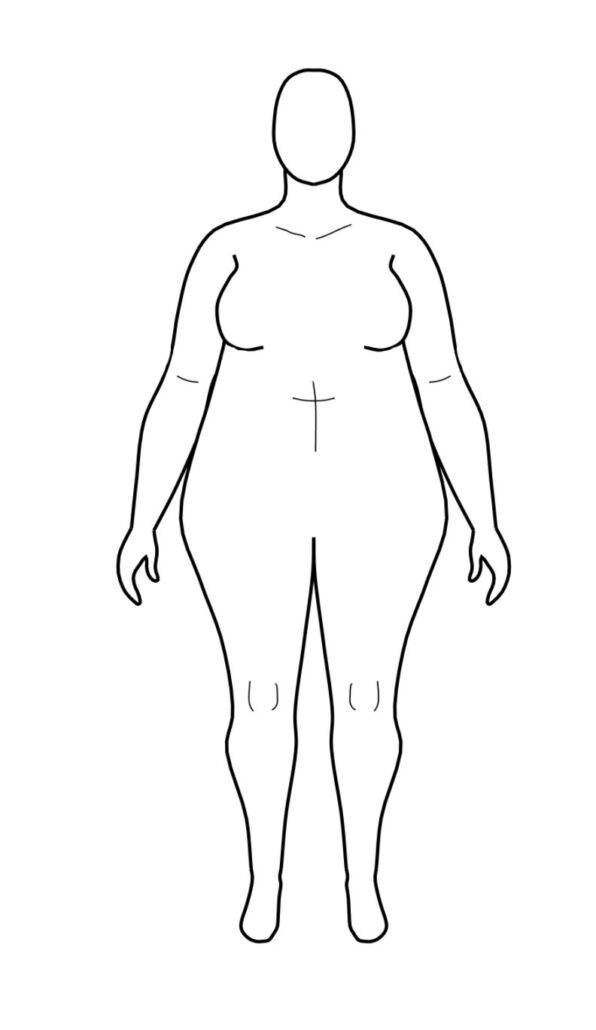
My thighs and calves aren’t a problem when fitting clothes, but they do mean I can’t wear high socks, boots, or leg warmers, unless I make them myself. My ankles are a little big too, but not as proportionally big as my calves, so even back when I was smaller and could wear high boots, they never fit properly.
So what does this mean for silhouettes? Well, there are two that I live in: tunic-and-leggings, and fit-and-flare dress. They’re basically variations of the same thing: fitted around the shoulders, bust, and natural waist, then FLARE FLARE FLARE. Fit and flare or swing dresses are my favourite; they naturally follow my body’s shape, obscure the area I feel vulnerable about, and are pretty readily available. If the dress is more than a couple of inches above my knees, or a tunic length top, I wear it with leggings; if it’s closer to knee length or longer, I wear it with tights. In the summer I almost exclusively wear flared sun dresses, with those comfort shorts underneath.
How does this translate into knitting garments? I think you can guess by now: it means that “normal” length jumpers and cardigans aren’t my thing. At all. (What would I wear with them?) Instead, I wear cropped or longer length knits, that either hit high at my natural waist, or hang lower. A cropped jumper or cardi over a fit and flare dress isn’t just for 50’s vintage styles; with different colours and prints (and an above-knee or maxi skirt), it can look totally different. A longer jumper over leggings is easy and comfy, and a long open cardigan over a tunic and leggings, or a summer dress if it’s suddenly cooler, feels very cosy.
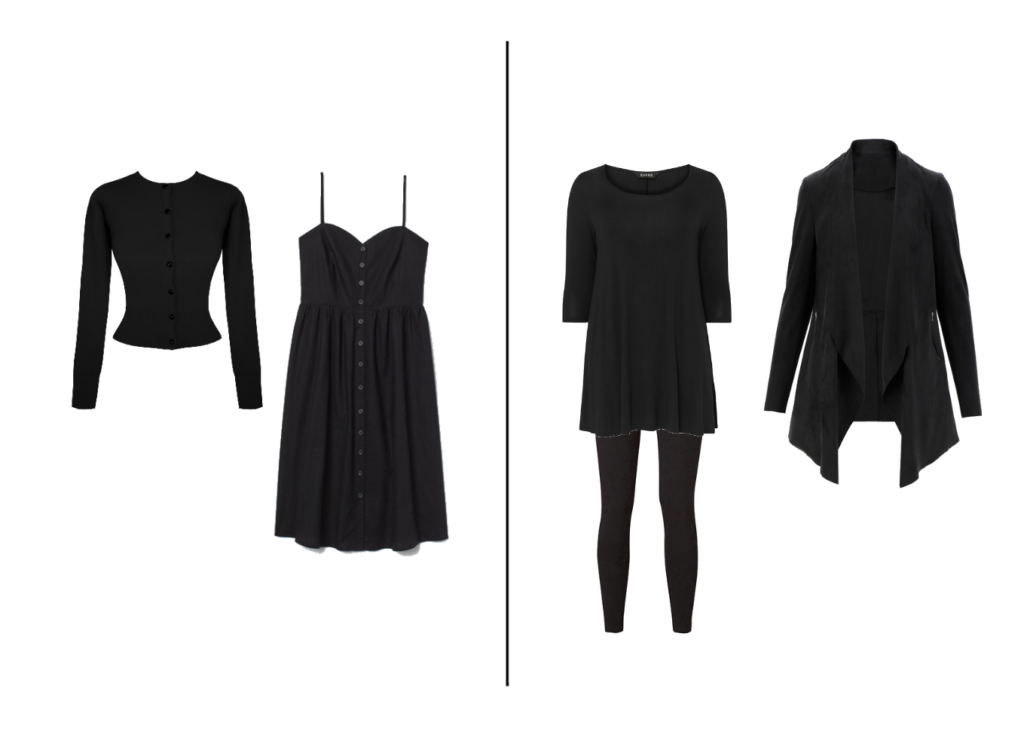
How does this inform my garment designs? Well, when I imagine jumpers that I want to wear, I don’t imagine them “normal” length. I imagine them cropped, or long, because that’s what I wear. So that’s how I’ll be knitting my samples.
It’s one of the easiest adjustments to make to a garment, though: any jumper can be cropped, especially when worked top down. Just stop knitting earlier, maybe make sure your pattern will still line up with your ribbing, and you’re done. Lengthening is also simple if you don’t want to add shaping; just knit some more. The trick there is working out how much extra yarn you might need.
I also often adjust jumpers to add some more space in the upper arm. For some reason even size inclusive designers often skimp here (which is a whole other rant about how size inclusivity is more than just grading up, and how just following the size chart and not considering any kind of variation is not actually helpful for many of us). Anyway: if I’m knitting it from scratch, you can bet I’m going to make it fit me properly.
So when I started working on garment designs, these were the fit issues I was thinking about. How do I design tops that work well at both cropped and regular length? How do I design sleeves that can be easily adjusted to add or reduce space? How do I enable knitters to make garments that will fit their bodies without having to grade five million pieces or provide lengthy alteration instructions?
I don’t have magic solutions to every body’s fit challenge. What I have are ideas, some of which will work out, and some of which won’t. What I want is to give you choices, so that I can knit a sample that works for me, and you can knit a garment that works for you (and that you don’t get caught short if you opt for a longer length).
When I first wrote this blog post, I hadn’t yet finished knitting Roseability, my first garment design. I’ve come back to review it today, with the pattern due back from my editor this week, and I’m no longer hoping it comes out all right: I’m itching to show it to you, to explain how it works, to tell you how certain I am that whatever size your arms are in relation to your body, this one WILL fit you.
I went ahead and used a photo of me in it for this blog post, even though it’s not really about this jumper; it’s about all of them, this one and every other one that comes after it. So I won’t keep going on about Roseability. Not yet.
In the meantime, I would LOVE to hear about what your fit wins and fit challenges are, especially with handknits. Are sleeves always too short? Are ballet wrap cardigans Your Thing? Are necklines always too wide (another pet peeve of mine)? Do you adore a good cosy rollneck? Is there a unicorn garment out there that nobody’s designed yet that you’re desperate to knit and wear? Whatever your strong opinions are, I want to hear them. There are no wrong answers!
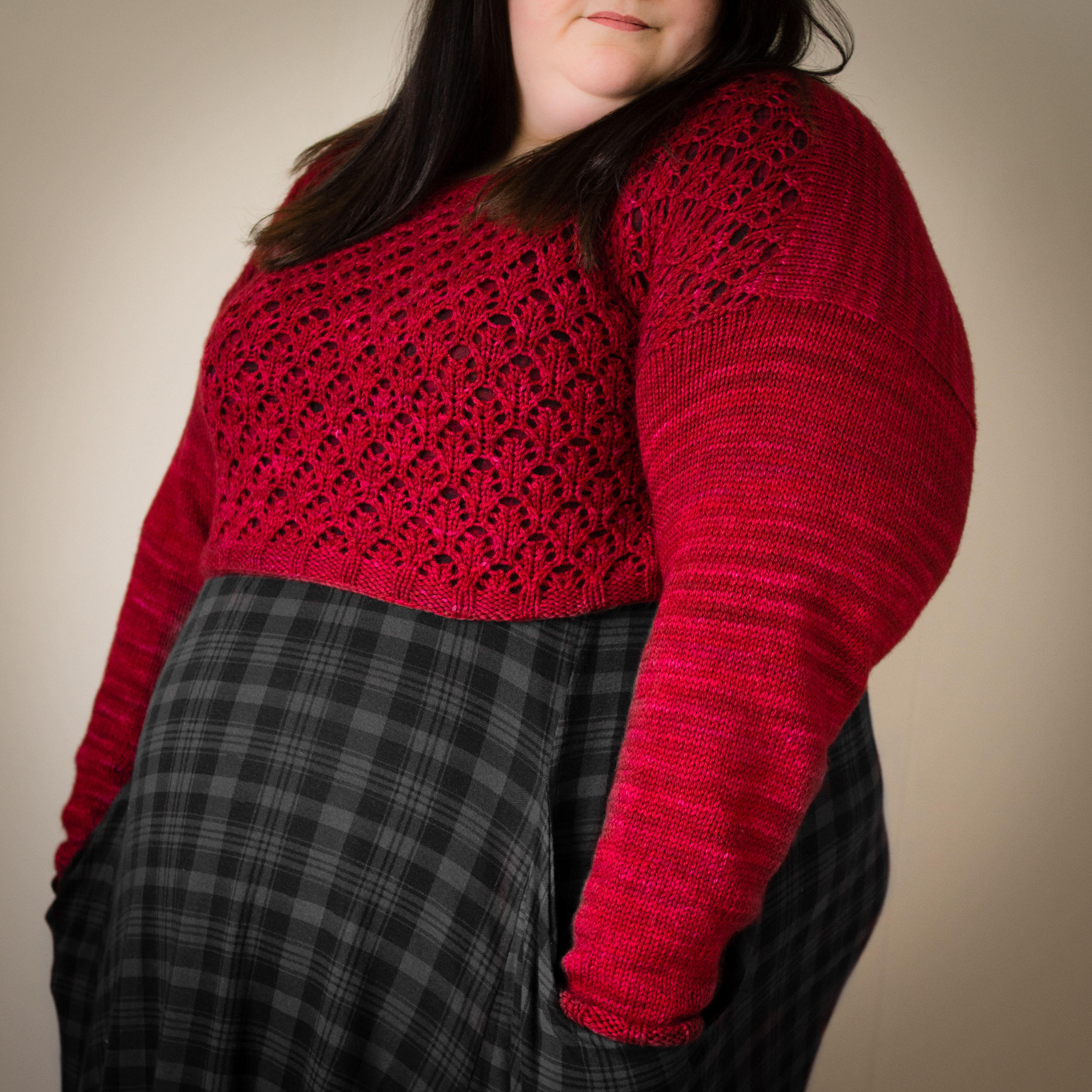
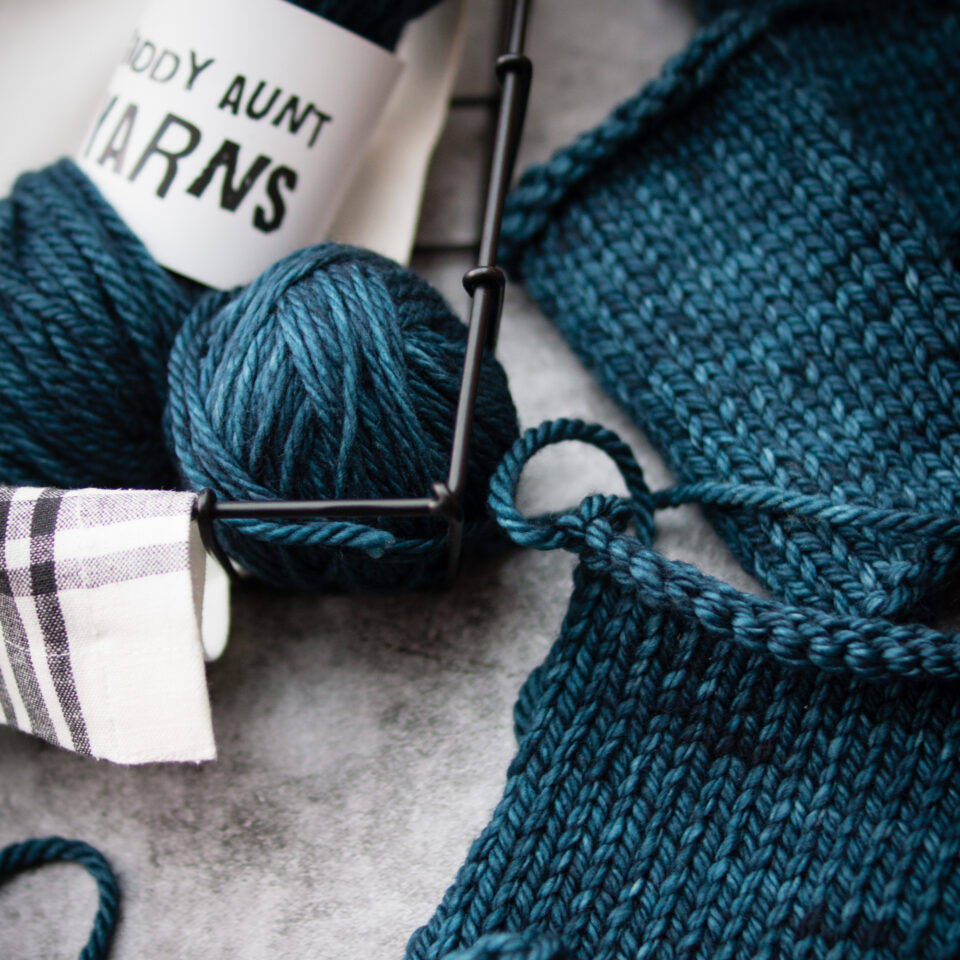
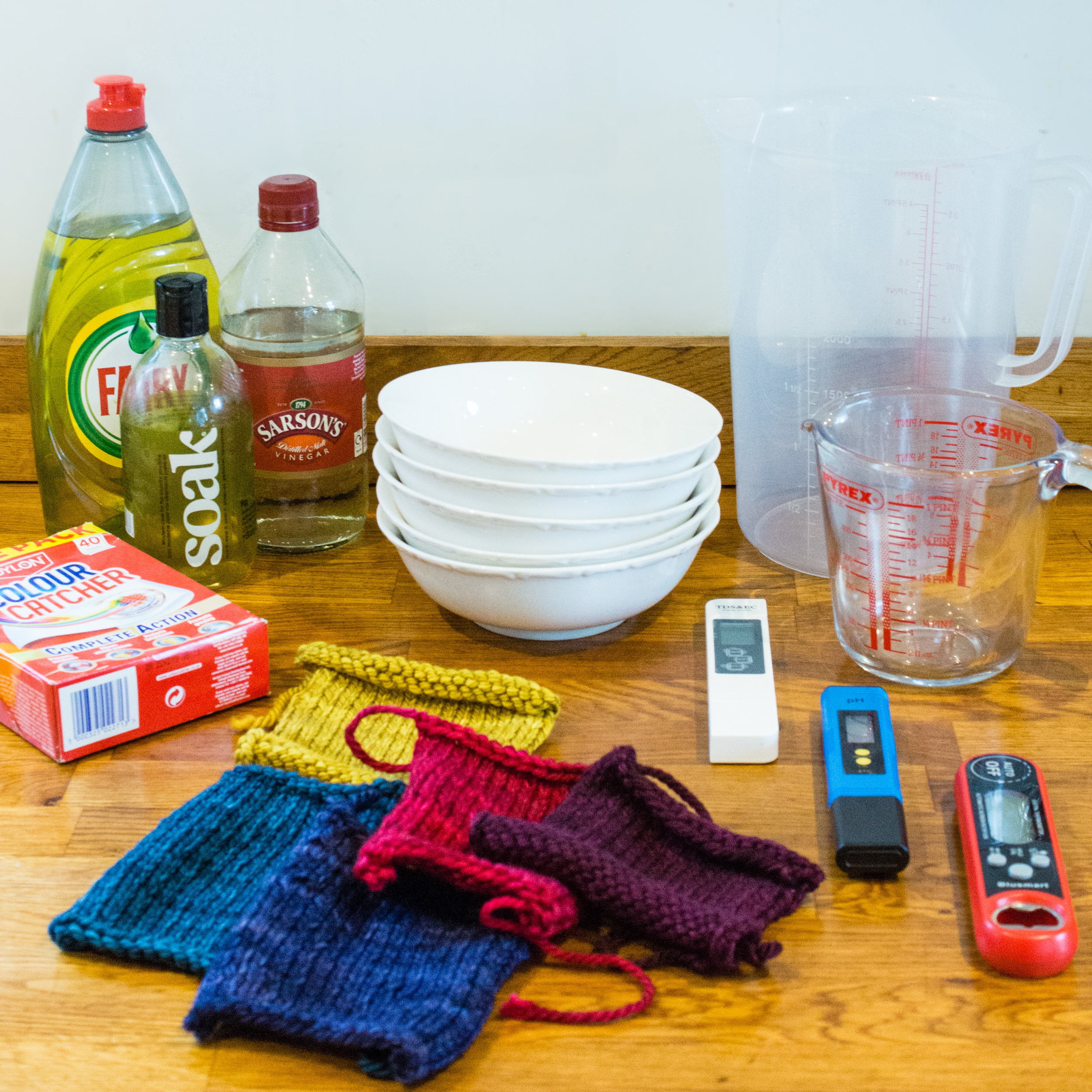



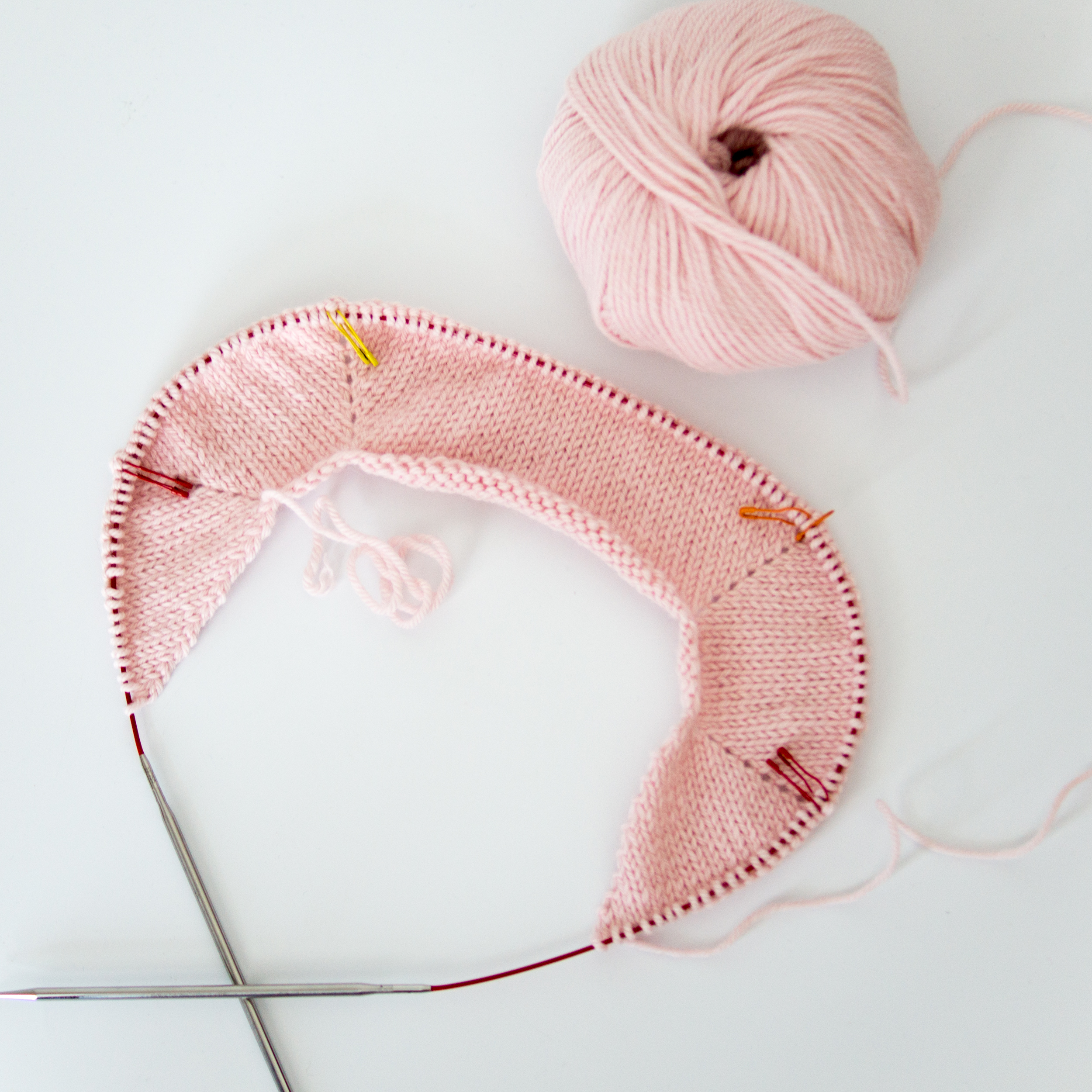
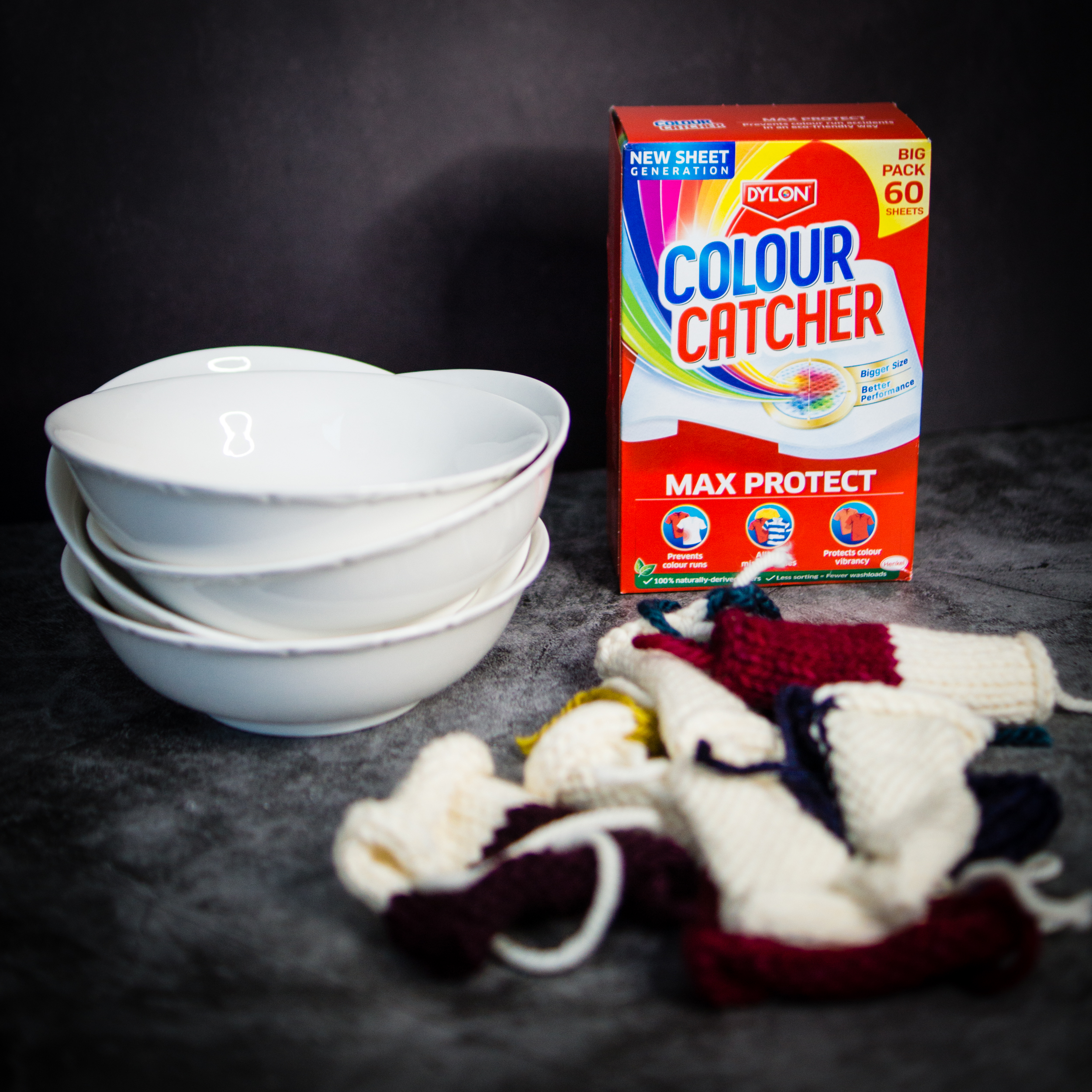
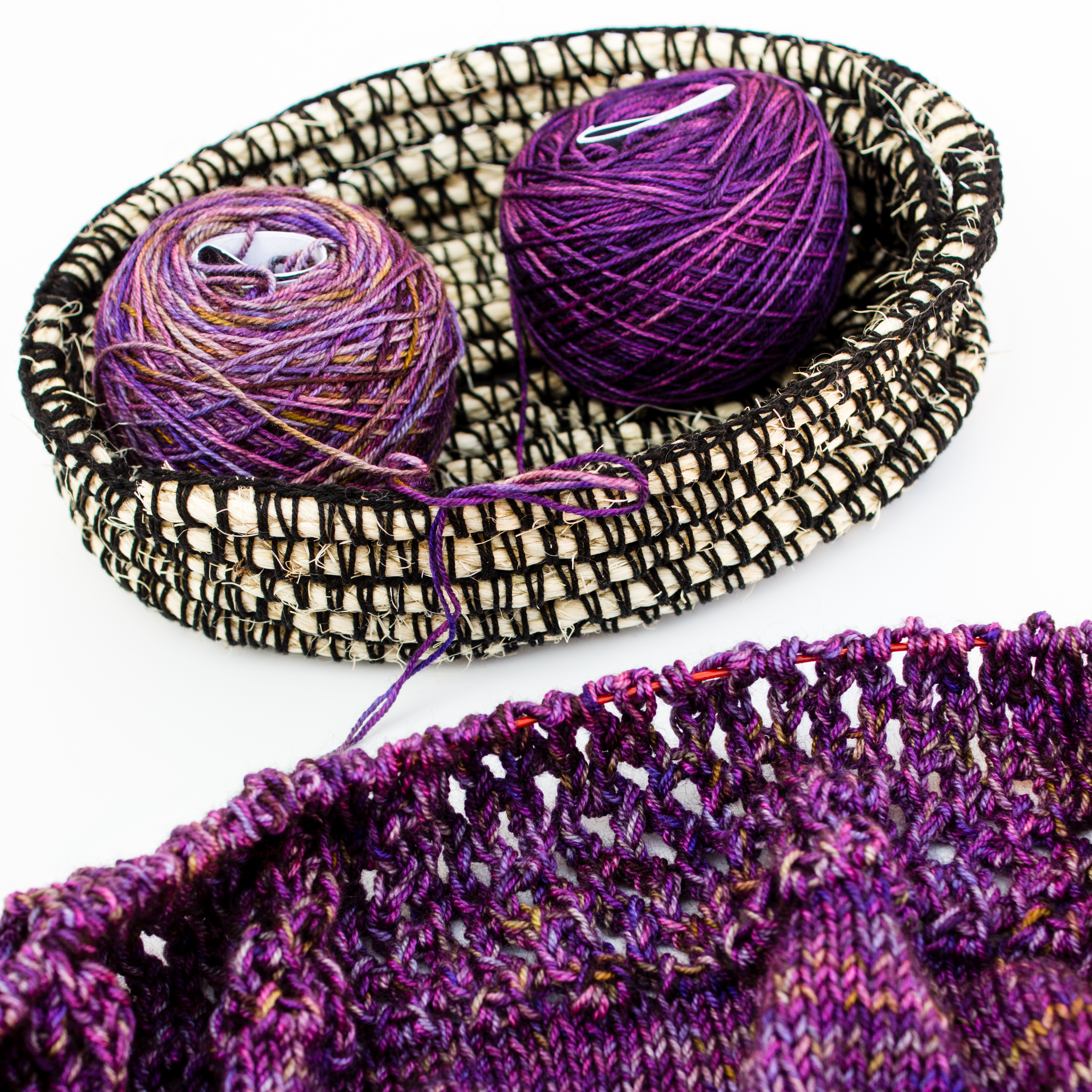
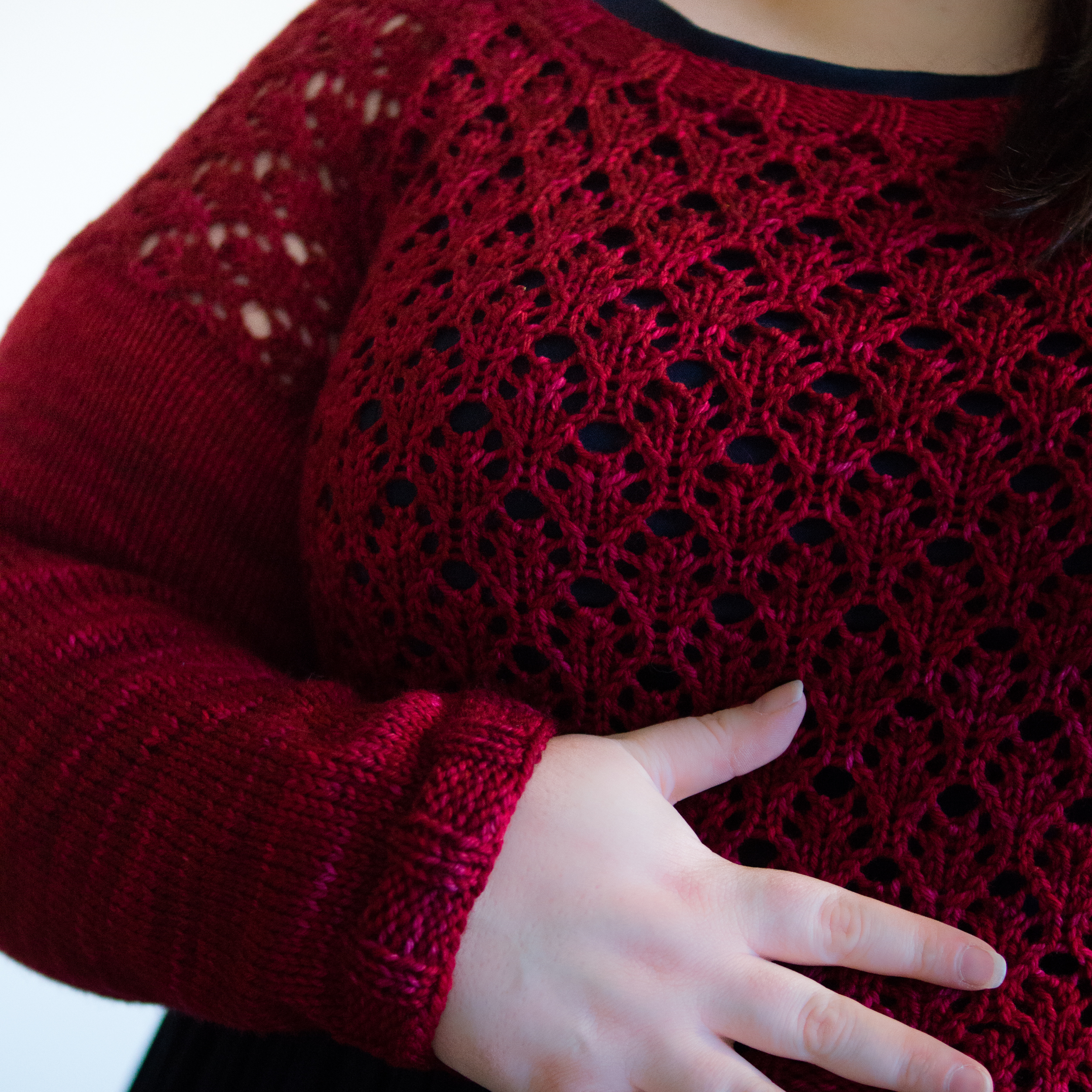
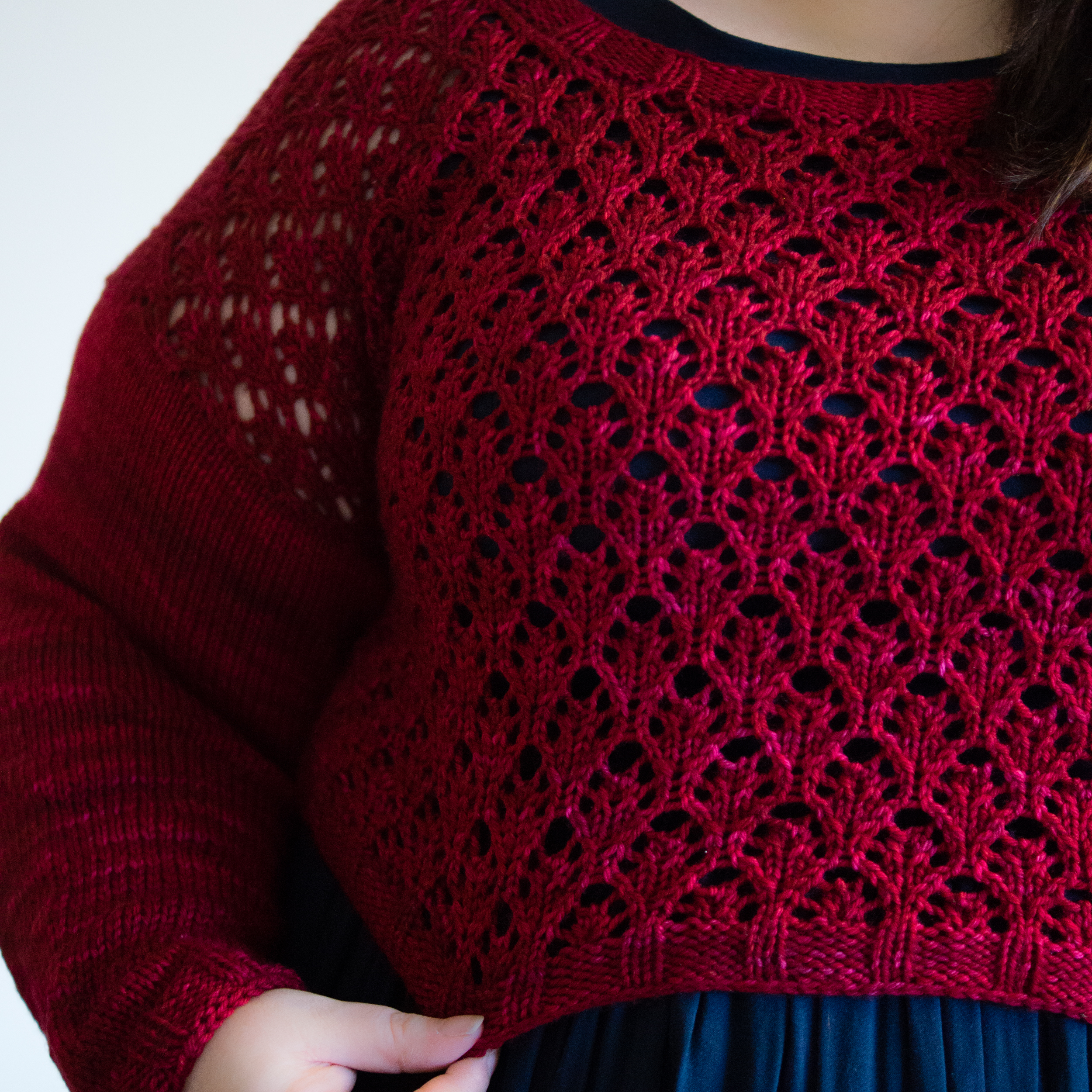
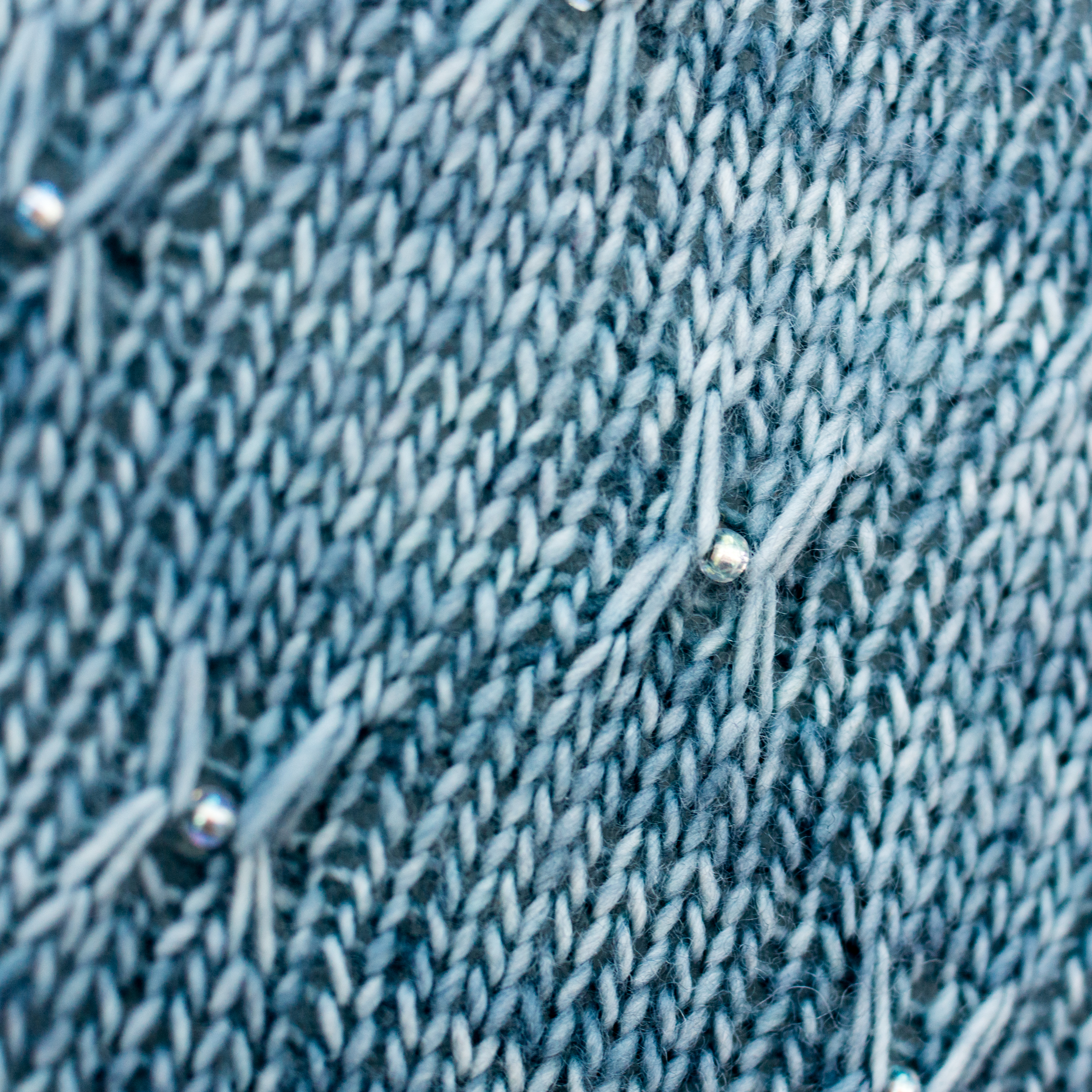
This is a fabulous, honest and insightful article, which has prompted me to really think about this in a single go (in the bath as it happens). I’ve been knitting and sewing my own since childhood and have been fat(tish) since then too. I’m probably mid/small fat sized, but a lifetime of swimming and weightlifting have given me odd proportions.
My bust is at least a size bigger than the rest of me, and my shoulders are wide, meaning that something which fits well in those two places will sag around the back, and be just shapeless everywhere else, so an indication of where (not necessarily how) to grade between sizes can be helpful – I’ll sometimes do a different front and back size in seamless garments.
My waist is narrow and my hips wide ish, with muscular thighs and calves but genetics mean that even at my smallest I have a bit of a “shelf” which I try and disguise, joining you in the cropped or longline spaces
The final issue I have is a weird one – I have a long torso proportionate to my height, but a very short distance between rips and hipbone, or bra strap and waist. This inevitably means fitting shaping into fewer rows at the top and more at the bottom of a garment to get something that fits.
Thank you so much for sharing your fit challenges! It sounds like you have a great understanding of your own body, which I’m sure is standing you in good stead when knitting and sewing. I’ll try to bear them in mind when designing and writing patterns so you can get the fit you want 💙
You are describing bits of me!!! Big tum, powerlifting arms. I also have a prop forward neck so necklines are always too tight. And I have really short arms. Good for bench, deadlifts not so much. And big boobs, that gravity, time and several failed diets have made not as perky as they were. I love making clothes to fit me from scratch, I haven’t quite got the knowledge to scale them for a saleable pattern. And when I work from someone’s pattern I always modify. I prefer top down garments so I can fit them as I go.
Ah we’re opposites there – deads were my favourite and I never really felt comfortable benching! I always find necklines too wide – slipping down and showing bra straps. Part of that is the weight of the sleeves vs a cropped body though – it doesn’t happen with a tunic length top.
Maybe more options in necklines is needed – something for me to think about!
Thank you so much for sharing.
We are similarly shaped however I have lymphedema of both legs. My calves and legs are fluid filled and vary greatly in size from day to day. Pants are my nightmare. My waist is 4 sizes smaller than my hips. I cannot wear boots of any style, even shoes can be tricky. My top half is small by comparison- so if it fits on top it’s too tight in the bottom. Conversely tops that fit at the bottom hem fall off my shoulders.
I admire your honesty in your blog. You are an inspiration. Not typically one to comment publicly but you have inspired me. Somewhere there’s a sweater pattern for me. You’ve given me hope.
Thank you !
That sounds like a very difficult situation to fit. I will be sure to keep it in mind. Thank you so much for sharing it with us 💙
Hi! My mom has lymphadema in her legs too and I don’t know anyone else who does. Caring for them is a job and her legs have ruined her life in a lot of ways. My passion for educating designers about size inclusivity comes from seeing her struggles, as she also has a fat body besides the fluid-heavy legs that wear her down. Thank you for your comment. It helps to hear!
Loved reading about your body and it’s actually quite similar to mine, although in addition to the big hip/small bust ratio I am also quite tall overall, which leads to many unforeseen things in high street clothing. Fat bodies are not meant to be tall apparently, so making my own clothes was always a dream of mine (currently working on improving my sewing skills). In addition to the apron, I have what I call my box – a little more fat sitting on top of the bum, which makes me pear-shaped in all dimensions. Interestingly, although our bodies are similar even to the bigger upper arms, I like normal length sweaters and tops, I just need to pay attention that they end above my “box” or they will snag there.
Can’t wait to see what you come up with for that sweater if yours! ☺️
I’m trying to get back into sewing, too! Managed to make a red riding hood cape for my daughter for World Book Day a couple of years ago, but haven’t had the machine out since, despite having fabric for a pair of Winslow culottes la ghosting in my (very modest) fabric stash.
Thank you so much for sharing your fit challenges, I shall keep them in mind!
My arm circumference does NOT match my bust size, so I always have to do complicated math to figure out the stitch count for a difference size sleeve versus my bust size for a sweater.
I have great news for you, Allison: the sweater shown in the photo here is graded separately for body and arms, so you can mix and match your sizes. Any body size, any sleeve size. 36-69” bust, 10”-32” sleeve. I’m hoping to be able to offer multiple sleeve options for every garment; certainly every drop sleeve style, now that I’ve worked out how to do it.
Wonderful!
My unicorn garment is really a pattern I want to see, something with fully interchangeable sleeves. I have the opposite sleeve problem to you, sleeves are always way too big for my arms! I have no idea how a pattern like that would actually work. The closest I’ve ever found is Kera by Laura Aylor, the sleeve and body decreases are done separately so it was possible for me to easily do sleeves five sizes smaller than the body. (Then I realised my tension had changed halfway through and everything above the waist was so big it was unwearable, but that was my problem not the patterns!)
I’ve got great news: that garment exists! It’s being test knit now, so not out yet, but I’ve worked out how to do exactly that on drop sleeve garments. You pick your body and sleeve sizes totally independent of each other, then bolt them together. Body goes from 36”-69”; sleeves 10”-32”. Mix and match sizing to suit everyone – however large your arms are (or aren’t!).
First of all thank you for sharing your body and its varying shapes. I too am fat and have been for most of my adult life. I also have an apron from 3 pregnancies and a gynae op where the lower part of my stomach was fastened flat to my frame so all weight gain hangs over that. Unlike you I have never been brave enough to wear dresses but have stuck to trousers and tunics or generally unshapely garments. Having read your article, I finally ordered a dress for summer today and I fully intend to buy and knit Roseability when it’s available. Apart from shawls, hats and cowls I have not knitted for myself for more than 35 years. I have loads of patterns I would like to knit but they are all for that other me, the one that is several sizes slimmer. How that’s going to happen at the age of almost 63 with lymphoedema in both legs, fibromyalgia, sciatica and bursitis in my hips I have no idea. Some/most days I struggle to walk, let alone exercise in a way that would make a significant difference to how fat I am. Thanks to you I have realised that it’s not my weight that needs to change, it’s my mindset.
Linda, thank you so much for your comment – I teared up a little reading it! I hope your summer dress is everything you hope it will be. You deserve to wear whatever makes you feel good, and you are absolutely, totally, 100% knit-worthy.
Thank you so much for this article. It is frustrating that designers attempting to be size inclusive so often miss the mark. Your outline of how a fat body works is excellent and I hope many designers see this! I can’t wait to see your finished pattern, and I love that you are cognizant of good fit but also the struggle of fat knitters often having to basically regrade patterns to fit, and avoiding that.
I’m delighted I found you! I knitted for a long time but then switched over to sewing. With sewing I know exactly how to fit my narrow torso, large biceps, round butt, big thighs, and big calves. Then, coming back to knitting, the first pattern I tried was like: you can’t add more than 1.25″ to the bicep, you will have to increase the overall size. What? What? What? then the shoulders and neck will be too big. So I’m mad. Very much looking forward to trying your patterns.
I’m delighted you found me too!
Knitting and sewing patterns get compared a fair bit and I have to say that as someone who does both, I do feel that knitting patterns are more complex. We’re not cutting something that already exists into shape; we’re using string and needles to create that fabric in the shape we require. That’s more complex, because we’re limited in how we can do that. So to some extent, I an sympathise with whoever wrote the pattern you mention; it may be that it’s not impossible to add more than 1.25″ to the bicep, but it was impossible to do so in a way that translated into clear instructions across all sizes. There’s a limit to how much adjustment any one pattern can accommodate before it becomes a book on how to knit a garment to fit your exact body (which is a great, but different, thing). But this is why we need more designers who are specifically designing for fat bodies. We can’t always be the afterthought, the oddity, the outlier. Sometimes we need to just be.
Thank you very much for your post. I am within conventional grading, and when my body has changed to make the shape differences no longer work the same way in ranges, I was unprepared as a knitter and garment consumer. Grief, trauma play a role and I never have seen that addressed in the books and articles that I have seen. More than anything, thank you for the photo caption with your partner’s words. This is where I need to learn in my personal life and much of what you explain for garment shopping has been real and limiting in my home too.
It sounds like we have nearly identically shaped bodies—the picture for this post caught my eye on IG, because I so rarely see upper arms that look like mine in knitwear. I have very narrow shoulders with huge biceps, large-ish breasts, and these days, a lot of stomach (complete with apron thanks to 2 pregnancies). My thighs have also decided they never want to be parted. Ever. I’m very short and it makes things very difficult fit-wise. (Oh. And while similar dresses to what you wear would be a perfect solution, they cause me gender dysphoria most days, so trying to figure out how to dress my silhouette is challenging on a good day. I live in joggers, tank tops, and cardigans over top most of the time. I’ve recently decided I really like long button down knit vests and have been on a prowl for patterns for those, but nothing is quite right. Which means I’ll likely have to attempt to draft one myself.) When it comes to sweaters, my best bet for alterations is usually drop-sleeves or I’ve found Jessie Maed Designs raglan pattern actually fits me pretty well, which is a first, because I usually need to fudge in so many stitches to get the sleeve width I need without the armpit of the sweater being down to my waist with that shape. (I’ve been meaning to learn how to do under-arm gussets in the hopes that I can get more sweater shapes to fit me better, but for some reason most womxn’s gussets are quite small [only 1-1.5″ of additional space], which doesn’t really fix the issue for me.) Arm-to-bust and shoulder fit is definitely my biggest sweater fitting challenge and every time I see a sweater design where the 46″-50″ bust has a 13-15″ upper arm measurement, my eye ticks. With a bicep measurement of 19-19.5″, I would need to knit a size 12″+ larger than my full bust measurement to get a sleeve close to fitting, and many times there are no options anywhere near close—even in a sweater with their largest sizes in the mid-60″ to 70″ range! And with such large biceps, negative ease there will never cut it. It causes so much pulling and warping in my sweaters. So. Frustrating.
Jacqueline Ciezslak includes sections in her patterns for bicep adjustments, but those are also dropped-sleeve patterns. It would be nice to see better adjustment modifications for other sleeve types. We need more fat designers, tbh. We have a few now, but we need more.
Dropped sleeve garments are one of the simplest constructions, and also one of the easiest to modify in this way. Since talking about Roseability’s construction I’ve seen two other designers adjust their patterns to support mix and match body and sleeve sizing, and I am THRILLED to see that! It’s actually really easy to do once you see it.
It’s harder to do on other shapes, but I’m working on it. What I’d like to do is to grade for big biceps and include instructions to reduce; that way I can prioritise those with shapes like mine. After all, why should it always be us doing the work to adjust things?
I love this discussion so much- how to make clothes that fit our bodies without shame. I have big shoulders, last and upper arms, and my hips are so much bigger than my waist that I have to get trousers adjusted or they gape at the back waist. If I find a shirt that fits my arms, it’s huge everywhere else. My bust is small compared to the rest of me. The Roseability is beautiful and I look forward to knitting it.
Shame is such a huge emotion. I don’t think people realise how much it affects us, and how much society’s treatment of fat people contributes to the amount of shame fat people are made to feel. The amount of effort we go to to keep that shame in check and be “good fats”. It is exhausting. It is so much effort to not be free.